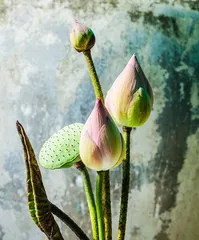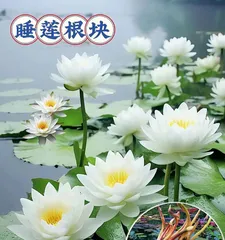Lotus is a beautiful aquatic plant that usually grows in ponds, but many people believe that lotus can only grow in an outdoor environment and is not suitable for indoors. However, with the improvement of people's quality of life, more and more people are turning their homes into green and environmentally friendly residences. Therefore, how to take good care of lotus at home has become a popular topic. This article will introduce you to the indoor care methods for lotus.

Lotus Variety Introduction
There are more than 100 varieties of lotus, and among them, more than 10 varieties are suitable for indoor growth, including "Moonlight," "Red Jade," etc. These varieties are generally cold-tolerant and can adapt to indoor environments.
Selecting Lotus
When selecting a lotus, you can first observe its leaves and flower buds. Healthy lotus leaves should be dark green, without any spots or signs of pests and diseases, and the flower buds should also be complete. You can also gently tap the lotus leaves and listen to the sound; if the sound is dull, it may be due to excessive water or pest and disease infestation.

Selecting a Container
When choosing a container for planting lotus, you can opt for a deeper ceramic pot or a glass tank to ensure that the lotus roots have sufficient space to grow. Additionally, the container's width should also be moderate, not too large or too small.
Selecting Soil
Lotus thrives in fertile, moist, and well-draining soil. You can prepare your own soil by mixing mud with water filtered by a fish tank filter. Of course, you can also choose lotus-specific soil available on the market.
Soaking Seeds
Before planting lotus, you can soak the seeds in warm water for more than 24 hours, which can promote seed germination and growth.

Planting
Plant the soaked seeds in the prepared soil, and then water them gently. It should be noted that after planting, the lotus seeds need to maintain a certain humidity. You can use a sprayer to lightly moisten the soil surface.
Care Temperature
Lotus has high requirements for temperature, and the suitable growth temperature is between 20°C and 30°C. In addition, avoid exposing the lotus to strong sunlight or placing it in an excessively cold environment.
Fertilizing
Lotus needs appropriate nutrients to maintain healthy growth. You can apply an appropriate amount of liquid fertilizer to the lotus every two weeks, but do not over-fertilize to avoid root burn.
Watering
Lotus grows in water, so watering is one of its most basic needs. When caring for lotus indoors, you can water it about every two days and keep the water level about 3-5 cm from the edge of the pot.
Preventing Water Quality Deterioration
Lotus has high requirements for water quality. Avoid using tap water containing chemicals such as chlorine and fluoride for irrigation. You can choose distilled water or filtered tap water for watering to ensure the healthy growth of the lotus.
Pests and Diseases
Lotus is susceptible to pests and diseases such as leaf spot, powdery mildew, and aphids. If you find any abnormalities in the lotus, you can take corresponding preventive and control measures, such as spraying organic fertilizer or using pesticides.
Light Pruning
If the stems and leaves of the lotus grow too long, you can prune them appropriately to ensure the beautiful shape of the lotus.
Proper Dormancy
During the growth process, lotus also needs an appropriate dormant period, which usually begins in autumn. At this time, you can stop fertilizing and watering, and place the lotus in an environment with suitable temperature and sufficient light.
Preventing Mold Growth
Lotus is prone to mold growth. When caring for it, pay attention to the ventilation and dryness of the environment around the lotus to avoid mold growth.
Although lotus grows in water, it is completely feasible to care for it indoors. As long as you pay attention to the planting and care methods of lotus and maintain suitable temperature, water quality, and nutrients, you can enjoy this beautiful aquatic plant.